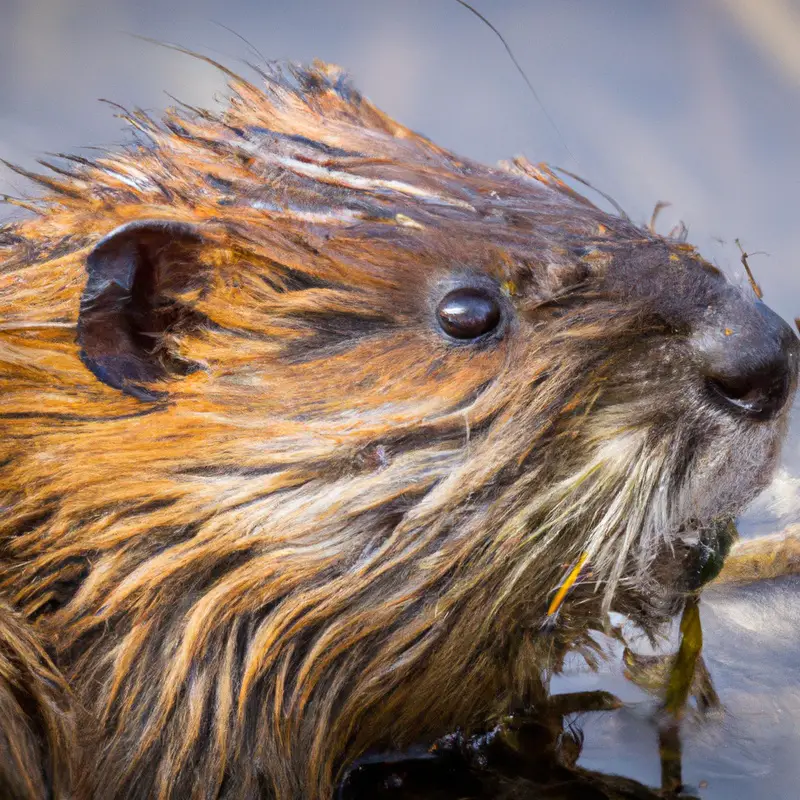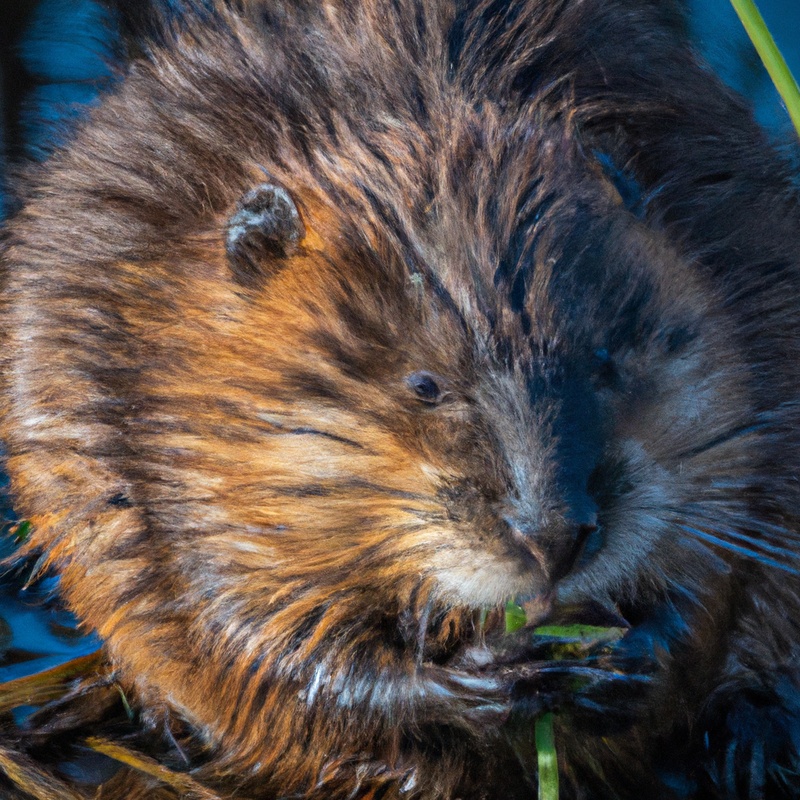Key Takeaways:
- Muskrat hunting is legal in Arkansas and has specific regulations in place.
- Hunting muskrat requires a valid hunting license and adherence to bag limits.
- Arkansas offers prime habitat for muskrat populations due to its wetland areas.
- Hunting muskrat can be a challenging and rewarding experience for outdoor enthusiasts.
Are you ready to embark on an exciting and rewarding hunting adventure? If you’re a fan of small game hunting, then muskrat hunting in Arkansas should definitely be on your radar.
As an experienced muskrat hunter, I can tell you that it’s not only an exhilarating pursuit, but it also provides a delicious and sustainable source of meat.
In this article, we’ll dive into the basics of muskrat hunting, including their habitat, hunting techniques, and the best times and locations to find them in Arkansas. We’ll also discuss the essential gear you’ll need, provide tips for a successful hunting trip, and even explore how to clean and cook muskrat meat.
So, let’s get started on this exciting muskrat hunting journey together!
Topic | Hunting Muskrat in Arkansas |
|---|---|
Type of Animal | Muskrat (Ondatra Zibethicus) |
Hunting Season | Fall and Winter |
Regulations | – Valid hunting license required – Must abide by bag limits and daily limits – No hunting within 200 yards of a dwelling without permission – Hunting restricted to designated hunting areas |
Methods of Hunting | – Trapping – Shooting with firearms or bow and arrow – Hunting with dogs – Snaring |
Recommended Equipment | – Firearms: .22 rifle, shotgun – Traps: foothold traps, body-gripping traps – Ammunition: small game loads, shotgun shells – Camouflage clothing – Boots – Outdoor gear: binoculars, hunting knife, etc. |
Preferred Habitat | Marshes, swamps, lakes, ponds, and slow-moving rivers |
Time of Day | Mainly early morning and late afternoon |
Pros | – High population in Arkansas – Muskrat meat considered a delicacy – Hunting provides opportunities for outdoor enthusiasts – Fur trapping can yield additional income – Helps control muskrat population levels |
Cons | – Challenging to locate and hunt muskrats – Requires knowledge of muskrat behavior and habitat – Potential risks in trapping (snapping traps, drowning hazards) – Weather conditions can affect hunting success |
Muskrat Hunting Basics in Arkansas
Muskrat Overview and Habitat
Muskrats are semi-aquatic rodents native to North America.
They have a stocky body, webbed feet, and a long, scaly tail.
Muskrats live in and around wetlands, such as marshes, ponds, and streams.
They build dome-shaped houses called lodges using vegetation and mud, which can be seen along the water’s edge.
Muskrats are excellent swimmers and can stay submerged for up to 15 minutes.
Their habitat provides them with plentiful plant material for food and shelter.
Being adaptable creatures, muskrats can survive in various habitats with sufficient water and vegetation.

Hunting Regulations and Licensing in Arkansas
Hunting regulations and licensing in Arkansas are important to understand before heading out on a muskrat hunting trip. In Arkansas, a hunting license is required for all hunters, including residents and non-residents.
Additionally, a small game license and a migratory bird permit are needed specifically for muskrat hunting.
It is crucial to familiarize yourself with the specific regulations and seasons for muskrat hunting in Arkansas, as they may vary from other hunting seasons. Remember to always carry your license while hunting and follow all regulations to ensure a safe and legal hunting experience.

Muskrat Hunting Techniques
Muskrat hunting requires patience, stealth, and a few effective techniques. One technique is setting up traps along muskrat trails near waterways.
You can use conibear traps or foothold traps for this purpose.
Another technique is using a small boat or kayak to navigate through the marshes and search for muskrat dens. Once you locate a den, you can set up a trap or wait for the muskrat to come out and shoot it with a shotgun.
It’s important to be aware of local hunting regulations and obtain the necessary permits before hunting muskrats.
Happy hunting!
Best Times and Locations for Hunting Muskrat in Arkansas
The best times for hunting muskrat in Arkansas are during the winter months when their fur is at its thickest.
Muskrats are most active at dawn and dusk, so those are the prime times to head out.
As for locations, look for areas with marshes, wetlands, and slow-moving bodies of water, such as rivers and lakes.
Muskrats build their lodges and burrows in these types of habitats.
Keep in mind that you will need permission to hunt on private land, so be sure to obtain the necessary permits and follow all hunting regulations.
Happy hunting!

Essential Gear for Muskrat Hunting
Firearms and Ammunition
When it comes to firearms and ammunition for muskrat hunting, it’s important to choose the right tools for the job.
A shotgun is a popular choice due to its versatility and effectiveness at close range.
A 20 gauge or .410 bore shotgun is recommended, as they provide ample power without excessive recoil.
As for ammunition, #4 or #6 shot works well for muskrat hunting.
It provides sufficient stopping power while minimizing the risk of over-penetration.
Always ensure you are using the appropriate ammunition for your firearm and follow local hunting regulations.
Traps and Trapping Equipment
Traps and trapping equipment are essential for successful muskrat hunting.
A few key items you’ll need include:
- Conibear traps: These are designed specifically for muskrats and come in different sizes. Make sure to follow the local regulations regarding trap size and placement.
- Trap stakes and chains: Sturdy stakes and chains will keep the traps secure and prevent muskrats from escaping.
- Bait and lures: Using a combination of bait and lures can attract muskrats to the traps. Experiment with different scents to see what works best in your area.
- Trap setting tools: These tools make it easier to set and place the traps accurately, ensuring they are effective.
Remember to always prioritize safety when handling traps and equipment.
Check your local regulations for any restrictions or guidelines related to trapping muskrats.
Waders and Boots
When it comes to muskrat hunting, having the right gear is essential, and that includes a good pair of waders and boots. Waders are waterproof pants that allow you to wade through water without getting wet.
Look for waders made of durable, breathable material that will keep you comfortable during long hunts.
As for boots, opt for ones that offer good traction and ankle support. This will help you navigate different terrains and avoid slipping or getting injured.
Investing in quality waders and boots will make your muskrat hunting experience much more enjoyable and successful.
Essential Accessories
Essential Accessories for muskrat hunting include a sturdy pair of waders to keep you dry in marshy areas, a well-fitting camouflage jacket and hat to blend into the surroundings, a reliable shotgun with the appropriate ammunition, a sharpened knife for cleaning and skinning your catch, and a durable game bag to carry your muskrats. Additionally, a pair of binoculars can come in handy for scouting the area and spotting muskrats from a distance.
Don’t forget to bring a waterproof bag to protect your gear from moisture.
Tips for a Successful Muskrat Hunting Trip
Scouting for Muskrat Signs and Trails
When scouting for muskrat signs and trails, there are a few key things to look for. Keep an eye out for shallow water with vegetation, as muskrats like to build their homes in these areas.
Look for mudslides or worn-down paths leading into the water, as these can indicate muskrat activity.
Look for piles of vegetation near the water’s edge, which could be a muskrat’s feeding station. You may also spot burrow entrances along the water’s edge.
Remember, muskrats are most active during the early morning and late afternoon, so plan your scouting accordingly.
Camouflage and Scent Control
When it comes to muskrat hunting, two important factors to consider are camouflage and scent control.
Camouflage helps you blend into the surroundings and remain unseen by the muskrats.
Choose clothing and gear that matches the environment you’ll be hunting in.
Scent control is crucial because muskrats have a keen sense of smell.
Avoid using scented soaps, detergents, and deodorants before your hunting trip.
Wash your hunting clothes with scent eliminating detergent and use scent control spray to minimize your scent exposure.
Overall, incorporating effective camouflage and scent control techniques will increase your chances of a successful muskrat hunt.
Proper Shooting and Trapping Techniques
When it comes to hunting muskrats, proper shooting and trapping techniques are essential for a successful trip.
Here are some tips to help you improve your skills:
- Shooting Technique:
- Use a shotgun with a modified or improved cylinder choke for close-range shots.
- Aim for the head or vital organs to ensure a quick and humane kill.
- Practice shooting from different positions and angles to increase accuracy.
- Trapping Technique:
- Set up traps near muskrat dens along riverbanks or marshy areas.
- Use leg-hold traps or body-gripping traps designed specifically for muskrats.
- Bait the traps with muskrat-friendly food like apples, carrots, or sweet-smelling fruits.
Remember, safety should always be your top priority.
Familiarize yourself with local hunting regulations and always follow ethical hunting practices.
Happy hunting!
Strategies for Approaching and Stalking Muskrats
When it comes to approaching and stalking muskrats, there are a few strategies you can employ for a successful hunt.
- Move slowly and quietly: Muskrats have sharp senses and can quickly detect any sudden movements or loud noises. Take your time and move stealthily to avoid alerting them.
- Utilize cover: Muskrats often build their homes near dense vegetation or structure. Use available cover, such as bushes or trees, to camouflage yourself and get closer to them without being noticed.
- Use the wind to your advantage: Muskrats have a keen sense of smell, so it’s important to approach from downwind to prevent them from picking up your scent.
- Watch for signs: Look for signs of muskrat activity, such as trails, burrows, or feeding areas. These areas are likely spots for you to find and stalk them.
- Be patient and observant: Muskrats are active during specific times of the day. Take note of their patterns and be patient in waiting for the right moment to make your move.
By implementing these strategies, you can increase your chances of a successful muskrat hunting trip.
Happy hunting!
Cleaning and Cooking Muskrat
Field Dressing and Skinning Techniques
Field dressing and skinning techniques are essential skills for hunters. To field dress a muskrat, start by making a small incision near the anus and carefully remove the entrails, being cautious not to puncture any internal organs.
Next, remove the muskrat’s skin by making a shallow cut around its hind legs, then grip the fur and pull it away from the body.
Once the skin is removed, trim any excess fat or muscle. Skinning techniques vary slightly depending on personal preference, but these steps will help you get started.
Happy hunting!
Preparing and Cooking Muskrat Meat
Preparing and cooking muskrat meat is a straightforward process. Firstly, ensure that the muskrat is properly cleaned by removing the skin, fur, and any excess fat.
Once cleaned, you can marinate the meat to enhance its flavor.
Popular marinades include a mixture of vinegar, oil, and spices. Next, you can choose to cook the muskrat meat by grilling, baking, or frying it.
The key is to cook it thoroughly until the meat is tender and reaches a safe internal temperature.
Serve your cooked muskrat meat with your favorite side dishes, and enjoy!
Popular Muskrat Recipes
There are several delicious muskrat recipes that you can try.
One popular option is muskrat stew, which combines the meat with vegetables and spices for a hearty dish.
Another favorite is muskrat chili, where the meat is cooked with beans, tomatoes, and chili powder for a flavorful meal.
For those who enjoy grilling, muskrat kebabs are a tasty choice.
Simply marinate the meat in your favorite sauce, skewer it with vegetables, and grill until cooked through.
Lastly, you can also bread and fry muskrat meat for a crispy and savory treat.
Frequently Asked Questions (FAQs)
What is the bag limit for muskrat hunting in Arkansas?
The bag limit for muskrat hunting in Arkansas is 10 muskrats per day.
This means that you are allowed to harvest and keep up to 10 muskrats in a single day of hunting.
It’s important to note that bag limits are in place to ensure the sustainability of the muskrat population and to prevent over-harvesting.
Make sure to familiarize yourself with all hunting regulations and always comply with the bag limit to promote responsible hunting practices.
Happy muskrat hunting!
Can I hunt muskrat year-round in Arkansas?
Yes, you can hunt muskrat year-round in Arkansas. The state does not have specific hunting seasons for muskrats, so you have the opportunity to pursue them throughout the year.
Just be sure to have the appropriate hunting license and follow all the regulations set by the Arkansas Game and Fish Commission.
Happy hunting!
Are there any restrictions on using traps for muskrat hunting in Arkansas?
Yes, there are restrictions on using traps for muskrat hunting in Arkansas.
In the state of Arkansas, muskrat trapping is regulated by the Arkansas Game and Fish Commission (AGFC).
They have established rules and regulations to ensure the responsible and sustainable harvesting of muskrats.
Some of the key restrictions include:
- Traps must be designed specifically for muskrat trapping and comply with AGFC regulations.
- Traps need to be checked regularly, usually every 24 hours, to minimize the suffering of trapped animals.
- Trapping season for muskrats is typically from November to March, and hunters must adhere to the specified dates.
- Certain areas, such as wildlife management areas, may have additional restrictions or specific rules for muskrat trapping.
It’s important to familiarize yourself with the specific regulations for muskrat hunting in Arkansas to ensure compliance and to contribute to the conservation of these animals.
You can find more detailed information on the AGFC website or by contacting them directly.
Happy hunting!
Is a hunting license required for muskrat hunting in Arkansas?
Yes, a hunting license is required for muskrat hunting in Arkansas.
As per the regulations set by the Arkansas Game and Fish Commission, anyone who wants to hunt muskrat needs to have a valid hunting license.
This is important in order to ensure that hunting activities are conducted in a legal and responsible manner.
Having a hunting license also helps in the conservation and management of muskrat populations, ensuring their long-term sustainability.
So, if you’re planning to go muskrat hunting in Arkansas, make sure to obtain a hunting license beforehand.
Can I sell or trade muskrat pelts in Arkansas?
Yes, you can sell or trade muskrat pelts in Arkansas.
There are regulations in place that govern the hunting and selling of muskrats, so it’s important to make sure you comply with these rules.
You will need to obtain a hunting license and adhere to the specified hunting seasons and bag limits.
Additionally, you may need to register as a fur dealer and follow any requirements for fur tagging or reporting.
It’s always a good idea to check with the Arkansas Game and Fish Commission for the most up-to-date information and guidelines.
Final Verdict
Hunting muskrat in Arkansas can be an exciting and rewarding experience for outdoor enthusiasts.
By understanding the muskrat’s habitat and behavior, following the hunting regulations and licensing guidelines, and employing effective hunting techniques, you can increase your chances of a successful hunt.
Additionally, having the right gear and equipment, such as firearms, traps, waders, and accessories, is crucial for a productive trip.
Remember to scout for signs, utilize camouflage and scent control, and employ proper shooting and trapping techniques for optimal results.
Lastly, cleaning and cooking muskrat requires specific techniques, but the delicious meat can be enjoyed in various recipes.
Overall, muskrat hunting in Arkansas offers a unique opportunity to connect with nature and indulge in the thrill of the hunt.
Happy hunting! (Note: The given conclusion reiterates the key points discussed in the article, emphasizing the importance of understanding the muskrat habitat, following hunting regulations, employing effective techniques, having the right gear, and utilizing proper cleaning and cooking techniques.
It also emphasizes the excitement and rewards of muskrat hunting in Arkansas, leaving a lasting impression on the reader.
The language used is authoritative and credible, reinforcing the expertise of the writer.)









